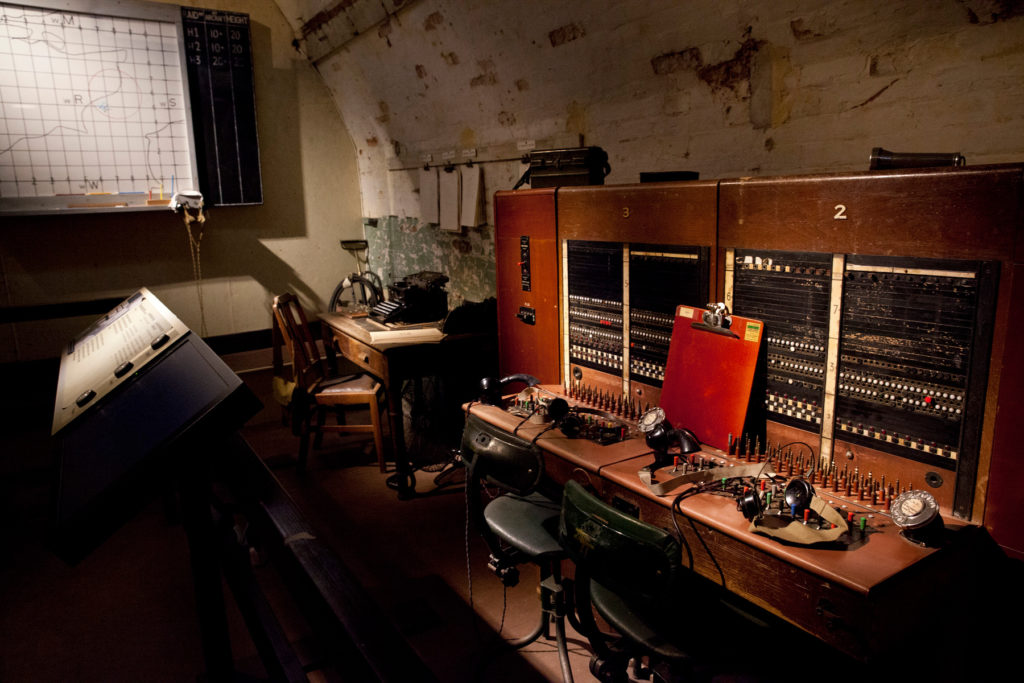
Dr Dominique Bouchard
Head of Learning and Interpretation, English Heritage, UK
Museums have no borders,
they have a network
September 30, 2020
To participate in our newest ICOM Voices
call for contributions, click here.
Keywords: Interpretation; Museology; Digital; COVID-19; Visitor Experience
The visitor experience was at the heart of our response, and we focused our efforts on making the most of the National Heritage Collection during lockdown through digital-led initiatives. These programmes became part of a new strand of work, Agile Interpretation.

Agile Interpretation is English Heritage’s new programme of visitor-focused, responsive, low-cost interpretative interventions, designed to support enriched visitor experiences at our sites. It began as a crisis management approach, but we realised quickly that it offered a way to think differently about interpretation, emphasising rapid turnaround and innovation. Today, Agile Interpretation forms a key part of English Heritage’s ongoing strategy.
How it began
On 18 March 2020, when English Heritage closed all of our paid entry sites, the Agile Interpretation programme was established to ensure high-quality access during lockdown to the National Heritage Collection through three digital-led initiatives: improving online historical content, enhanced history pages for Free-to-Enter sites (which remained open briefly when restrictions began), and home learning.
At first, this meant creating new digital content and identifying fresh ways to support home learning. However, the biggest challenge was to minimise the impact on visitors when sites eventually re-opened. Some areas of sites would remain inaccessible, and key elements including handheld audio guides and interactives would be affected, if not withdrawn entirely. As official guidance was susceptible to change, any plans would need to be flexible and responsive.
On-site Agile Interpretation
Keeping visitors, volunteers and staff safe was our top priority. Ensuring safety required a comprehensive review of how people visit and work at our sites. Due to social distancing, access to some areas of sites would be restricted, limiting interpretation or creating gaps in storytelling. Two Agile Interpretation initiatives, ‘Dynamic Visitor Routes’ and a project to transfer all our audio guides from handheld units to Bring Your Own Device (BYOD), were considered to have the greatest short-term impact whilst potentially also having longer-term relevance.
Seven new panel templates were created; each had a QR code and simple text to indicate the type of content accessible by scanning the code. The panels Watch, Listen, Family Fun, Look Inside, Explore the Collection, and Find Out More, could be used at any site, and hinted at the kind of content the code might reveal whilst maintaining a sense of discovery. Deployed as part of the Dynamic Visitor Route programme, the new panels were intended to help bridge gaps in on-site storytelling or give digital access to restricted areas, and could be moved or removed easily.

Dynamic Visitor Routes
We believed that a dynamic approach to visitor routes would allow us to accommodate either a relaxation or tightening of restrictions, yet how to do that whilst also ensuring a coherent on-site narrative was not obvious. Some exploratory conversations with architects at University College London suggested a ‘space syntax’ approach could be valuable. ‘Space syntax’ is a spatial analysis approach that represents and compares the way people move through complex, interlinked spaces, and complexes. Initial assessments showed that visitor routes would need to be re-thought for 100+ sites: an enormous challenge! We re-modelled how visitors could move around sites, identifying ‘nodes’, locations where visitors make key decisions about their journey, and focused on these locations for the Agile Interpretation panels.
For example, Dover Castle’s famous Wartime Tunnels, the staging post for the Dunkirk evacuation in World War II, needed to remain closed as social distancing would be impossible. To help visitors explore this important history, temporary Agile Interpretation panels at the entrance to the Tunnels gave visitors access to exciting multimedia content created in May 2020 for the 75th anniversary of the Dunkirk evacuation helping to bring the story of the Tunnels to life.

BYOD Audio Guides
Typically, handheld audio guides are included with the price of admissions and so take-up of guides at our sites is between 40-60%. COVID-19 meant that even if handsets could be handed out safely, many visitors might not feel confident borrowing an audio guide, thus significantly impairing visitors’ access to the full interpretation available at a site. To address this and as part of the Agile Interpretation project, all of English Heritage’s handheld audio guides were converted to a BYOD model. In order to maximise visitors’ ability to choose a BYOD format that best suited their needs, we offered free downloadable guides via a native app (Guide-ID’s Podcatcher) and a Progressive Web App (PWA). A download code for the audio guide is included when purchasing a ticket; for visitors who either forgot to pre-download a guide or only decided to use an audio guide once they’ve arrived on site, a QR code at the site’s entrance directs visitors to the PWA, which streams individual audio guide stops, avoiding the need to download or store anything. Audio guide handsets are also available at sites that are able to distribute them safely.
The future of Agile Interpretation
Although Agile Interpretation started as a crisis management programme to minimise the disruption to visitors’ experience of our sites as well as respond to rapidly changing health guidance, it has quickly become a new and exciting approach for interpretation at English Heritage. Through the challenges posed by COVID-19, we have become more open to challenging ourselves to be nimbler and more responsive, improve our cross-departmental working practices, and focus more closely than ever on ensuring our visitors have memorable experiences. Agile Interpretation has demonstrated the potential of small-scale, temporary, and low-cost measures that prioritise visitors, and empower staff to be experimental and playful.
References and resources
English Heritage website:
Example of online historial content on English Heritage website:
https://www.english-heritage.org.uk/visit/blue-plaques/blue-plaque-stories/heroes-of-health/
Home learning support:
https://www.english-heritage.org.uk/learn/teaching-resources/home-learning/
The Space Syntax Laboratory at the Bartlett School of Architecture, University College London (UK): https://www.ucl.ac.uk/bartlett/architecture/research/space-syntax-laboratory
PWA Audio Guide for Battle Abbey:
https://mapmyvisit.com/listen/WPDGQK
_________________
Opinions expressed in the article do not commit ICOM in any way and are the responsibility of its author.
To participate in our newest ICOM Voices call for contributions, click here.
